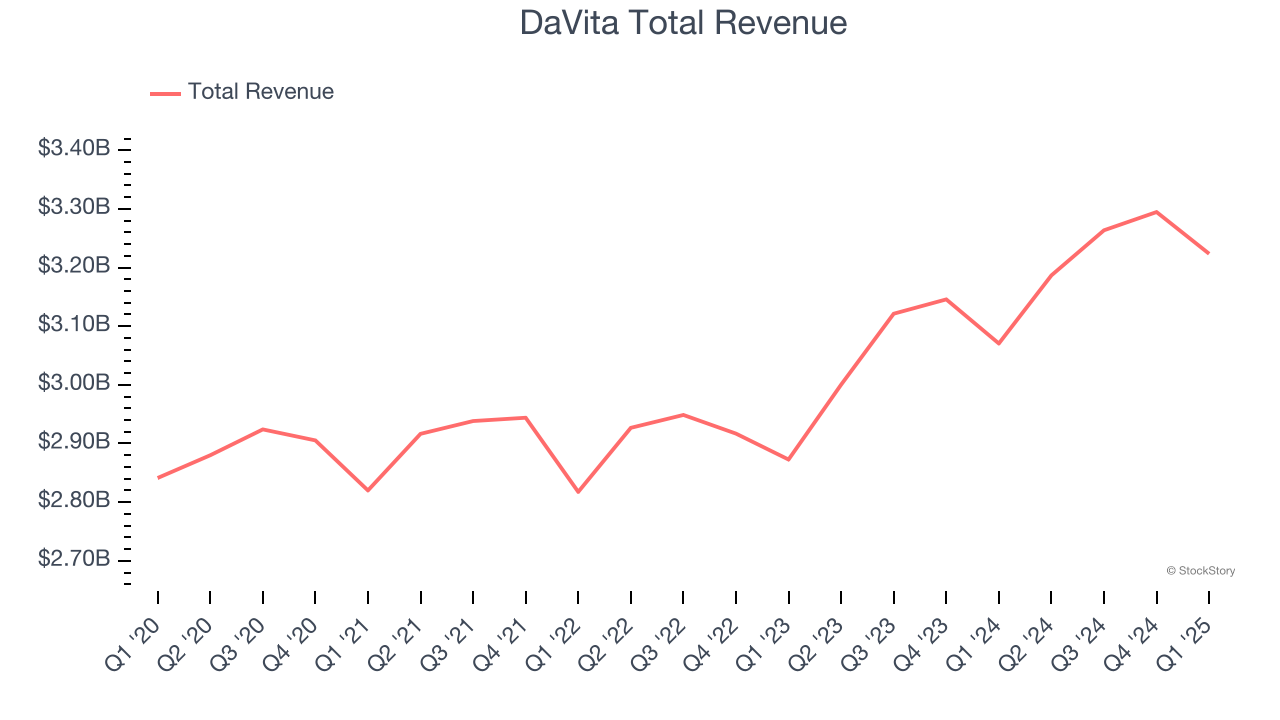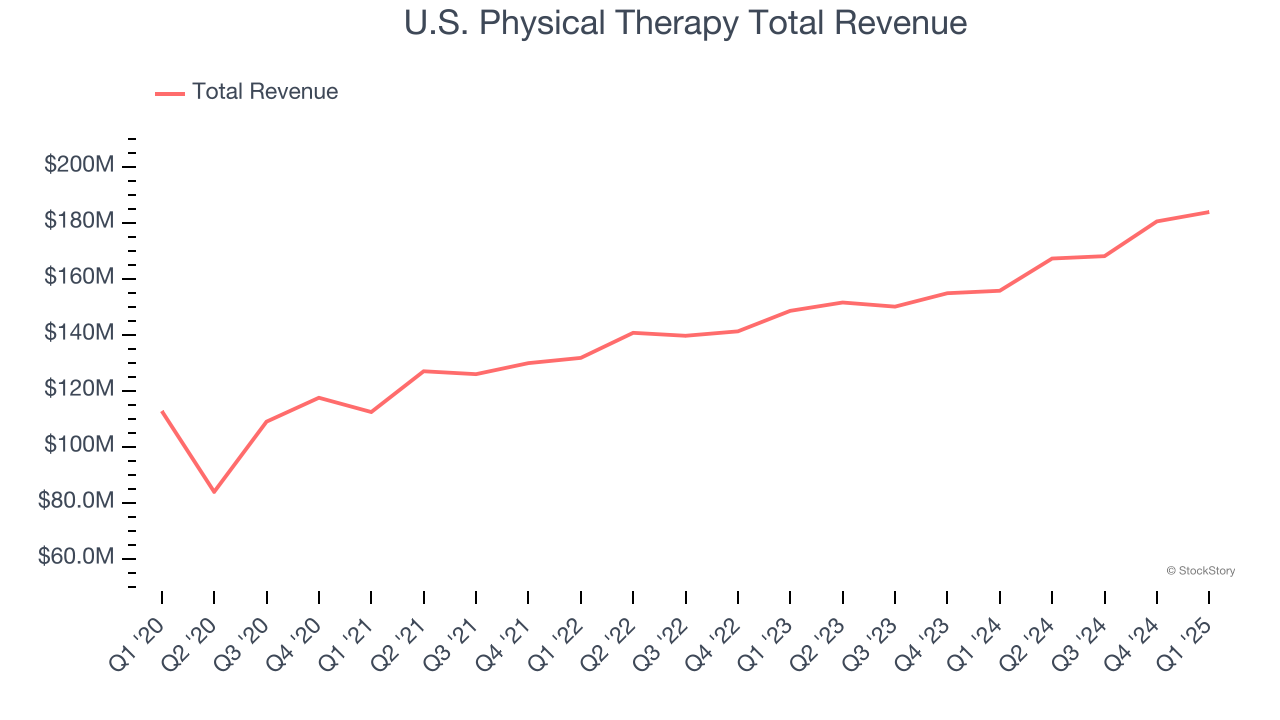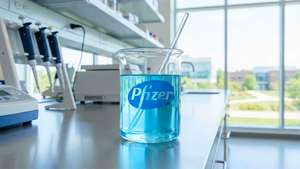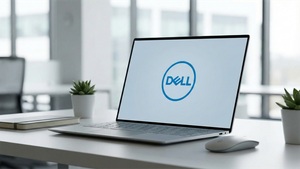
Let’s dig into the relative performance of DaVita (NYSE: DVA) and its peers as we unravel the now-completed Q1 outpatient & specialty care earnings season.
The outpatient and specialty care industry delivers targeted medical services in non-hospital settings that are often cost-effective compared to inpatient alternatives. This means that they are more desired as rising healthcare costs and ways to combat them become more and more top-of-mind. Outpatient and specialty care providers boast revenue streams that are stable due to the recurring nature of treatment for chronic conditions and long-term patient relationships. However, their reliance on government reimbursement programs like Medicare means stroke-of-the-pen risk. Additionally, scaling a network of facilities can be capital-intensive with uneven return profiles amid competition from integrated healthcare systems. Looking ahead, the industry is positioned to grow as demand for outpatient services expands, driven by aging populations, a rising prevalence of chronic diseases, and a shift toward value-based care models. Tailwinds include advancements in medical technology that support more complex procedures in outpatient settings and the increasing focus on preventive care, which can be aided by data and AI. However, headwinds such as reimbursement rate cuts, labor shortages, and the financial strain of digitization may temper growth.
The 7 outpatient & specialty care stocks we track reported a mixed Q1. As a group, revenues beat analysts’ consensus estimates by 0.7% while next quarter’s revenue guidance was 0.8% below.
Amidst this news, share prices of the companies have had a rough stretch. On average, they are down 7.5% since the latest earnings results.
DaVita (NYSE: DVA)
With over 2,600 dialysis centers across the United States and a presence in 13 countries, DaVita (NYSE: DVA) operates a network of dialysis centers providing treatment and care for patients with chronic kidney disease and end-stage kidney disease.
DaVita reported revenues of $3.22 billion, up 5% year on year. This print exceeded analysts’ expectations by 0.5%. Despite the top-line beat, it was still a slower quarter for the company with a significant miss of analysts’ full-year EPS guidance estimates and a slight miss of analysts’ sales volume estimates.
"Our strong first quarter performance demonstrates the stability and consistency of our operating model" said Javier Rodriguez, CEO of DaVita Inc.

The stock is down 4.1% since reporting and currently trades at $138.17.
Read our full report on DaVita here, it’s free.
Best Q1: U.S. Physical Therapy (NYSE: USPH)
With a nationwide footprint spanning 671 clinics across 42 states, U.S. Physical Therapy (NYSE: USPH) operates a network of outpatient physical therapy clinics and provides industrial injury prevention services to employers across the United States.
U.S. Physical Therapy reported revenues of $183.8 million, up 18.1% year on year, outperforming analysts’ expectations by 4.4%. The business had an exceptional quarter with a solid beat of analysts’ sales volume estimates and a decent beat of analysts’ EPS estimates.

U.S. Physical Therapy achieved the biggest analyst estimates beat and fastest revenue growth among its peers. The market seems happy with the results as the stock is up 10.3% since reporting. It currently trades at $78.16.
Is now the time to buy U.S. Physical Therapy? Access our full analysis of the earnings results here, it’s free.
Weakest Q1: Select Medical (NYSE: SEM)
With a nationwide network spanning 46 states and over 2,700 healthcare facilities, Select Medical (NYSE: SEM) operates critical illness recovery hospitals, rehabilitation hospitals, outpatient rehabilitation clinics, and occupational health centers across the United States.
Select Medical reported revenues of $1.35 billion, up 2.4% year on year, falling short of analysts’ expectations by 2.6%. It was a softer quarter as it posted a significant miss of analysts’ EPS estimates and full-year revenue guidance missing analysts’ expectations.
Select Medical delivered the weakest performance against analyst estimates and weakest full-year guidance update in the group. As expected, the stock is down 17% since the results and currently trades at $15.13.
Read our full analysis of Select Medical’s results here.
agilon health (NYSE: AGL)
Transforming how doctors care for seniors by shifting financial incentives from volume to outcomes, agilon health (NYSE: AGL) provides a platform that helps primary care physicians transition to value-based care models for Medicare patients through long-term partnerships and global capitation arrangements.
agilon health reported revenues of $1.53 billion, down 4.5% year on year. This print surpassed analysts’ expectations by 1.8%. Zooming out, it was a slower quarter as it produced a significant miss of analysts’ EPS estimates and EBITDA guidance for next quarter missing analysts’ expectations.
agilon health had the slowest revenue growth among its peers. The company lost 36,000 customers and ended up with a total of 491,000. The stock is down 48.9% since reporting and currently trades at $2.29.
Read our full, actionable report on agilon health here, it’s free.
Surgery Partners (NASDAQ: SGRY)
With more than 180 locations across 33 states serving as alternatives to traditional hospital settings, Surgery Partners (NASDAQ: SGRY) operates a national network of outpatient surgical facilities including ambulatory surgery centers and short-stay surgical hospitals.
Surgery Partners reported revenues of $776 million, up 8.2% year on year. This number met analysts’ expectations. However, it was a slower quarter as it logged a significant miss of analysts’ EPS estimates and full-year revenue guidance meeting analysts’ expectations.
The stock is up 4.7% since reporting and currently trades at $23.17.
Read our full, actionable report on Surgery Partners here, it’s free.
Market Update
In response to the Fed’s rate hikes in 2022 and 2023, inflation has been gradually trending down from its post-pandemic peak, trending closer to the Fed’s 2% target. Despite higher borrowing costs, the economy has avoided flashing recessionary signals. This is the much-desired soft landing that many investors hoped for. The recent rate cuts (0.5% in September and 0.25% in November 2024) have bolstered the stock market, making 2024 a strong year for equities. Donald Trump’s presidential win in November sparked additional market gains, sending indices to record highs in the days following his victory. However, debates continue over possible tariffs and corporate tax adjustments, raising questions about economic stability in 2025.
Want to invest in winners with rock-solid fundamentals? Check out our Strong Momentum Stocks and add them to your watchlist. These companies are poised for growth regardless of the political or macroeconomic climate.






